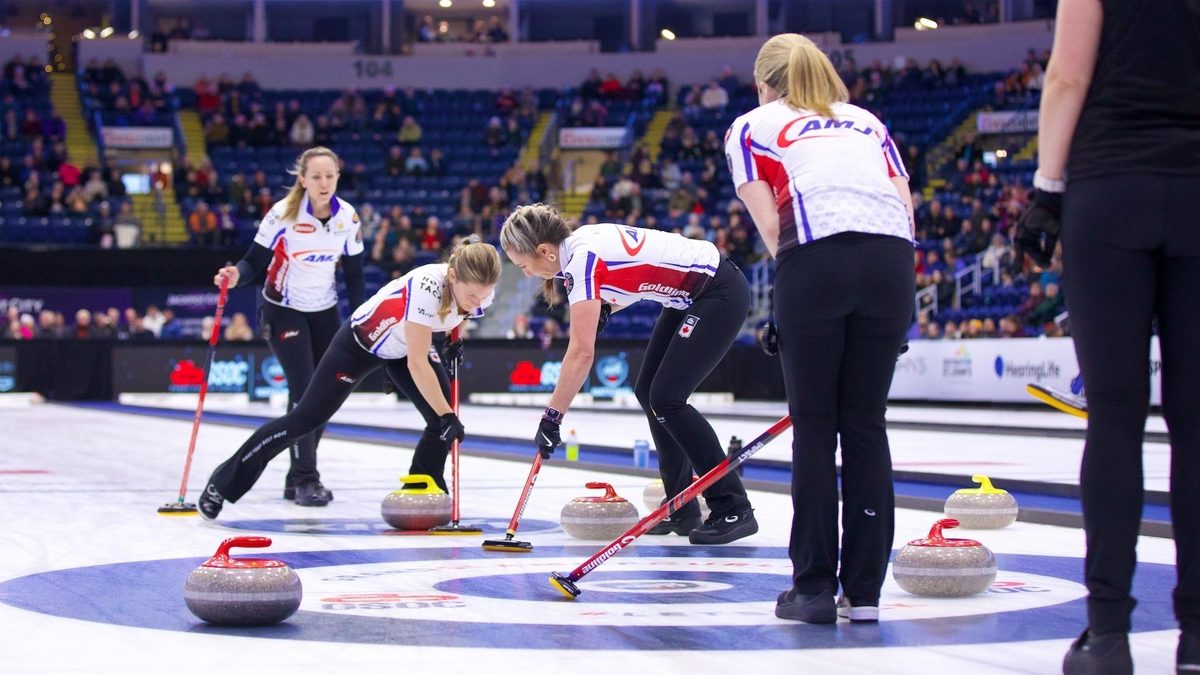
By Jolene Latimer
They told me it would build character. That’s why my parents smiled and waved from the lounge of the Shamrock Curling Club each Saturday morning throughout the winters of my childhood as I cried on the other side of the glass, begging to leave the ice early. It wasn't curling itself I hated, just that I was bad at it — a fact that seemed immutable at 11 years old.
"I already have a lot of character," I observed as my blowout losses mounted.
"Curling is a lifelong sport and will open doors for you one day," my mom prophesied. As it happens, we were both right.
I still maintain my parents just got lucky when they turned out to be right about curling opening doors. The sport couldn't have been further from my path when I graduated high school and moved from Edmonton to Los Angeles. They did have one early win, though. Much to the surprise of my 11-year-old self, I learned that being bad at curling was not as unchangeable as I assumed.
There was a novel concept called practice, and with a lot of it, I improved from bad to mediocre. As a teenager, I sometimes went as far as feeling I was good at curling. For a teenage girl, feeling good at something can change everything, and it was especially formative that I could see women in curling — both at the club and competitive levels — who were respected by fans and competitors. I'm not sure if I ever said this to my parents directly then, but maybe they could tell: I actually loved curling.
Because I had come to love curling, it was a sacrifice as a young adult to move to a part of the continent that had barely heard of it. But I wanted to be where big things happened, and nowhere could that be counted on more assuredly than L.A. I can't imagine my parents were exactly thrilled about the prospect of me searching for my life's path in L.A., but they understood why a character like me needed the experience. So, they packed up our family minivan for the three-day drive and dropped me off at the University of Southern California. Curling was reduced to a fun fact in my life's burgeoning lore, and there it stayed — dormant until a time when I needed it most.
L.A. can be a tough place for a young woman on her own, but I was naive enough not to be worried about that yet. I needed scope, and I found it working backstage at Coachella, in the Capitol Records Tower, or at the red carpet premieres that stretched down Hollywood Boulevard. At times, my naivety caught up with me, and at other times it was a secret weapon. I got my wish, and big things did happen to me — both good and bad. But still, after many years of expanding my horizons, I had not found anything that truly felt like my path. It was about to find me, though.
After graduating from college and working for several years, I decided to return to my alma mater for a Masters in journalism. I hadn't planned on sports reporting, but I needed to add one more class to my schedule and sports was the only fit. Curling was still not part of the plan, but when we were told to commit to a beat for the semester, I realized it was the only sport I knew well. My professor, an expert in the Olympic movement, was intrigued.
Sometimes it takes a twist of fate to find your way, and I was about to get mine. A week after I declared curling as my beat, the World Curling Federation unexpectedly emailed my professor about their annual media traineeship — did he know any students interested in covering curling? Winners would earn a trip to Scotland to cover the European Curling Championships. I entered, won, and ever since I touched down in Glasgow for that fateful week almost 10 years ago, I have been a sports reporter.
Sports reporting is a job that has taken me around the world — from world championships in swimming, athletics, and curling (of course), to the Olympic Games, ESPYS, NBA Awards, Stanley Cup Finals, World Series, and interviews with so many of today’s top athletes. I have met lifelong friends, witnessed history, slid out on Olympic ice, and even won an Emmy.
I owe so much to the sport, and especially to the women who shaped it into an environment where I felt comfortable engaging. Growing up, I took for granted the respect that women in curling command. It wasn't until I started working in other sports that I realized curling has been ahead of the game in this area. With my coverage now, I get to ensure curling continues to build on that foundation by bringing emotional depth and narrative weight to women’s curling stories.
And if you're keeping score at home, yes, my parents are also thrilled they've been able to say I told you so. Curling did open doors. How did they know that?



